Abstract 7/2015
Table of content
Jarosław Petrus – Subway in Warsaw – 20 years of operation for the city and its residents
Krzysztof Stypuła, Krzysztof Kozioł –Experience from Warsaw’s subway in the reference to the protection of buildings and people in buildings against vibrations
Wojciech Grodecki, Anna Siemińska-Lewandowska – Methods of constructing of metro tunnels in soils
Krzysztof Stypuła, Tadeusz Tatara – Selected results of researches on the influence of vibrations generated by tram on buildings in Cracow
Andrzej Szarata – The methodology of the strategic survey for the transport system development in urban areas
Abstracts
Jarosław Petrus
Subway in Warsaw – 20 years of operation for the city and its residents
Abstract: It has been already 20 years since the first Warsaw metro stations have been opened. This mean of transport has brought significant changes in travelling in the capital for its residents. It is a good opportunity to remind the origin of construction of the Warsaw subway and present details of its functioning. The Warsaw underground rail system consists of two lines: M1 and the central section of the M2. Although the Warsaw subway has only or as much as 20 years, first decision of its construction was taken already in 1925. Unfortunately, the crisis and outbreak of the Second World War blighted the building plans, which came back in 1951. However, again the investment has not been completed – construction was given up in 1957. It was only in 1983 when, on the basis of the resolution of the national government, the subway’s construction started again. The first stations of the M1 line were put into use in 1995, and the construction of the entire first line was completed thirteen years later. The construction of the central section of the second line M2, running under the Vistula river started in 2010. The work has been completed in 2015. Nowadays, around 500 000 passengers use daily an underground communication, considering it as the fastest and most convenient way of travelling around the capital. Taking into consideration a great interest in this mean of communication, the authorities of Warsaw Metro work very hard to continuously enhance comfort and safety of passengers.
Keywords: subway, Warsaw subway, first metro/subway line, second metro/subway line
Krzysztof Stypuła, Krzysztof Kozioł
Experience from Warsaw’s subway in the reference to the protection of buildings and people in buildings against vibrations
Abstract: The article concerns problem of the effect of vibrations generated by the subway in nearly buildings and people in these buildings. Laws, guidelines and regulations by standards on these issues are presented. The algorithm protection of buildings and people in buildings developed on the basis of experience from Warsaw’s subway operation is given. The technical ways to reduce vibration generated by metro and methodology used in the design of the vibroisolation of the rail surface on the Bielany section of 1st subway line in Warsaw are discussed. At the end conclusions for implementation of subway in Cracow in the reference to the dynamic influences on buildings (including historic buildings) and on the people living in these buildings are given. Examples of many historical cities where underground transport works prove that underground is not a threat to monuments and historic character of these cities. Proper design of vibroisolation eliminates the problem of excessive vibrations impact of the subway on buildings and on people in buildings, even in the case of shallow subway as it is in Warsaw. It can therefore be assumed that in case of the construction of subway in Cracow these problems also can be successfully resolved.
Keywords: transport vibrations, subway, vibroisolation
Wojciech Grodecki, Anna Siemińska-Lewandowska
Methods of constructing of metro tunnels in soils
Abstract: In the article the methods of construction of metro tunnels (running tunnels and stations) in soils are described. Regarding the development of the 2nd metro line in Warsaw and the plans of construction of metro networks in other Polish cities, f.i. Wrocław and Cracow, the advantages of underground solutions in relation to surface transportation systems are presented. The cut-and cover methods (Milan method and soldier pile wall method) of construction of running tunnels and stations in buildup areas are presented, in this case solutions of dealing with underground water are also shortly mentioned. As an alternative method of construction of running tunnels to open surface methods the mechanized tunnel boring methods are described. Earth pressure balance (EPB) and slurry shield tunnel boring machines (TBM) construction schemes and procedures are described in the detail. Finally, examples of deep underground metro stations built in dense urban areas are presented and discussed.
Keywords: subway, tunnel, construction of subway, construction of tunnels
Krzysztof Stypuła, Tadeusz Tatara
Selected results of researches on the influence of vibrations generated by tram on buildings in Cracow
Abstract: The first part of the article refers to the research on vibrations of selected historical buildings located in the centre of Krakow. The vibrations were caused by passages of different types trams near the structures. Harmfulness of vibration for the structures as well as the influence on people staying in the buildings have been performed with recorded components of acceleration vibrations according to the procedures described in Polish standards. The studies have shown a significant level of influence on the historic buildings depending on the type of tram. Vibration level has been significantly reduced after applying vibro-isolation selected on the basis of numerical simulation. It has also been presented the exceeding limits of perceiving of vibrations by people in buildings.
The second part of the article refers to the assessment of the effectiveness of the applied solution for the tram track due to the level of induced vibrations and their harmfulness for the construction of a residential building, located in the immediate vicinity of the track. Vibration measurements of the building before and after the track repair have been compared. The impact of run speed of various types of trams on vibration level induced in the residential building has been also specified on the basis of analysis of the vibration records. Mathematical relations describing dependences of the maximum values of the horizontal and vertical components of vibration acceleration measured at ground-level building as functions of trams’ speed and the coefficients of the trend line have been defined.
Keywords: transport vibrations, research on vibration, tram
Andrzej Szarata
Metodyka badań strategicznych wariantów rozwoju systemu transportu zbiorowego w obszarach zurbanizowanych
Abstract: The article presents procedure which should be applied during evaluation process of the transport system development within urban areas. The article defines the development projects and pointed out the process of their creation, from the conceptual solution to multivariate analysis. The role of the baseline scenario and the necessity of its precise definition to run comparative analyzes were described. Transport simulation models play an important role allowing to test variants and choose the desired solution. The article presents also the structure of the most commonly used four stage approach, with particular emphasis on the role of the Comprehensive Travel Studies in the process of its development. It is also emphasized that an important role is played by the model verification process and evaluation of its quality. Attention was also drawn to the possibility of calibration modules application, but at the same time dangers in their uncritical application was pointed. In the conclusion multi-criteria analysis as a tool to support decision-making process has been demonstrated.
Keywords: infrastructural investment, analysis of functional efficiency, demand modelling and forecasting

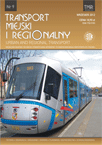 SITK RP
SITK RP 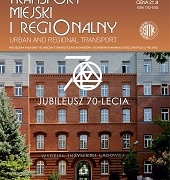 SITK RP
SITK RP 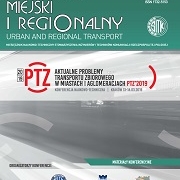
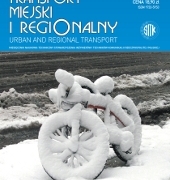 SITK RP
SITK RP 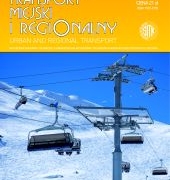 SITK RP
SITK RP 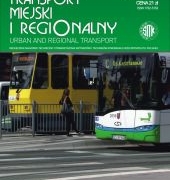 SITK RP
SITK RP 
 SITK RP
SITK RP SITK RP
SITK RP